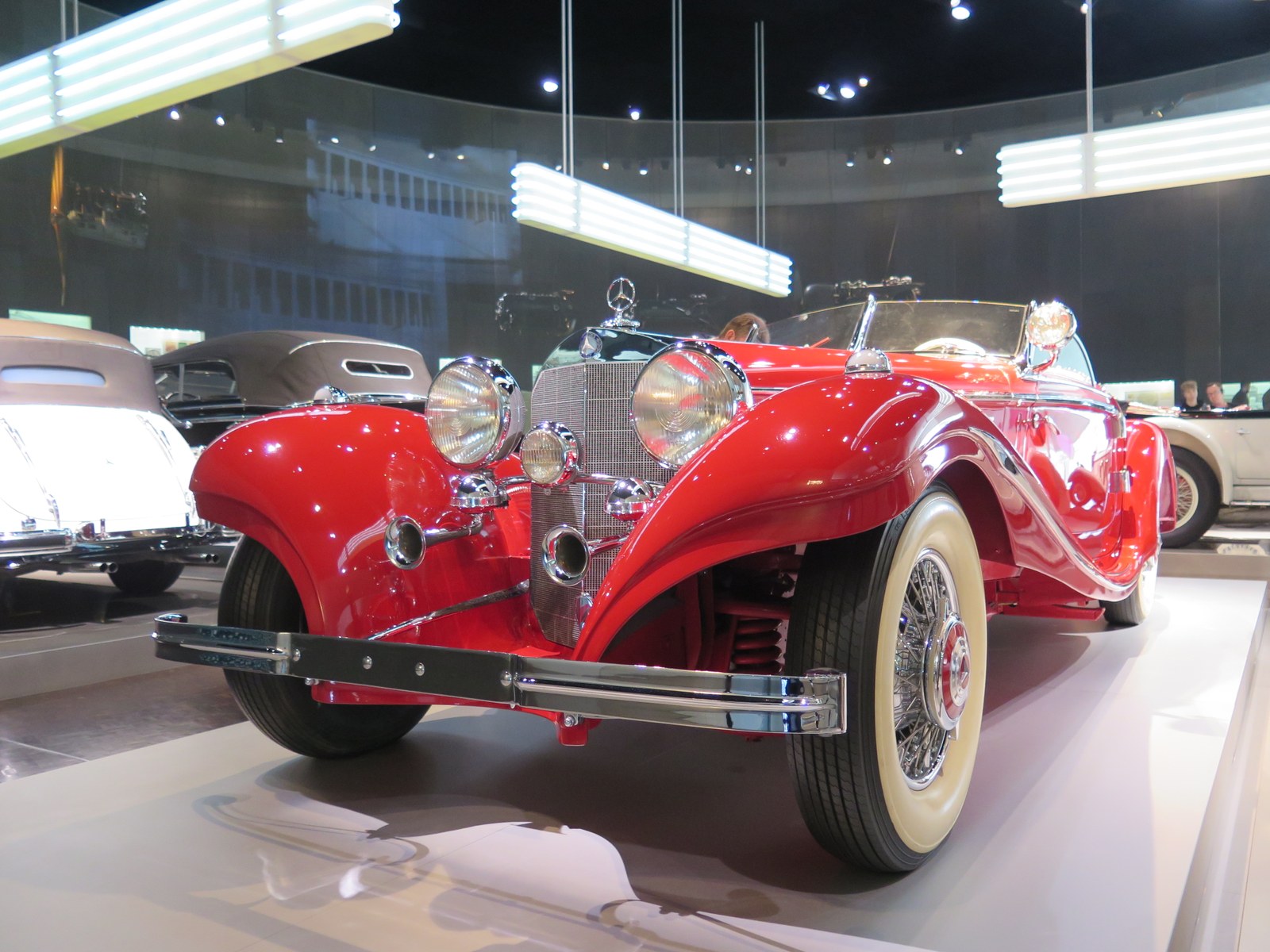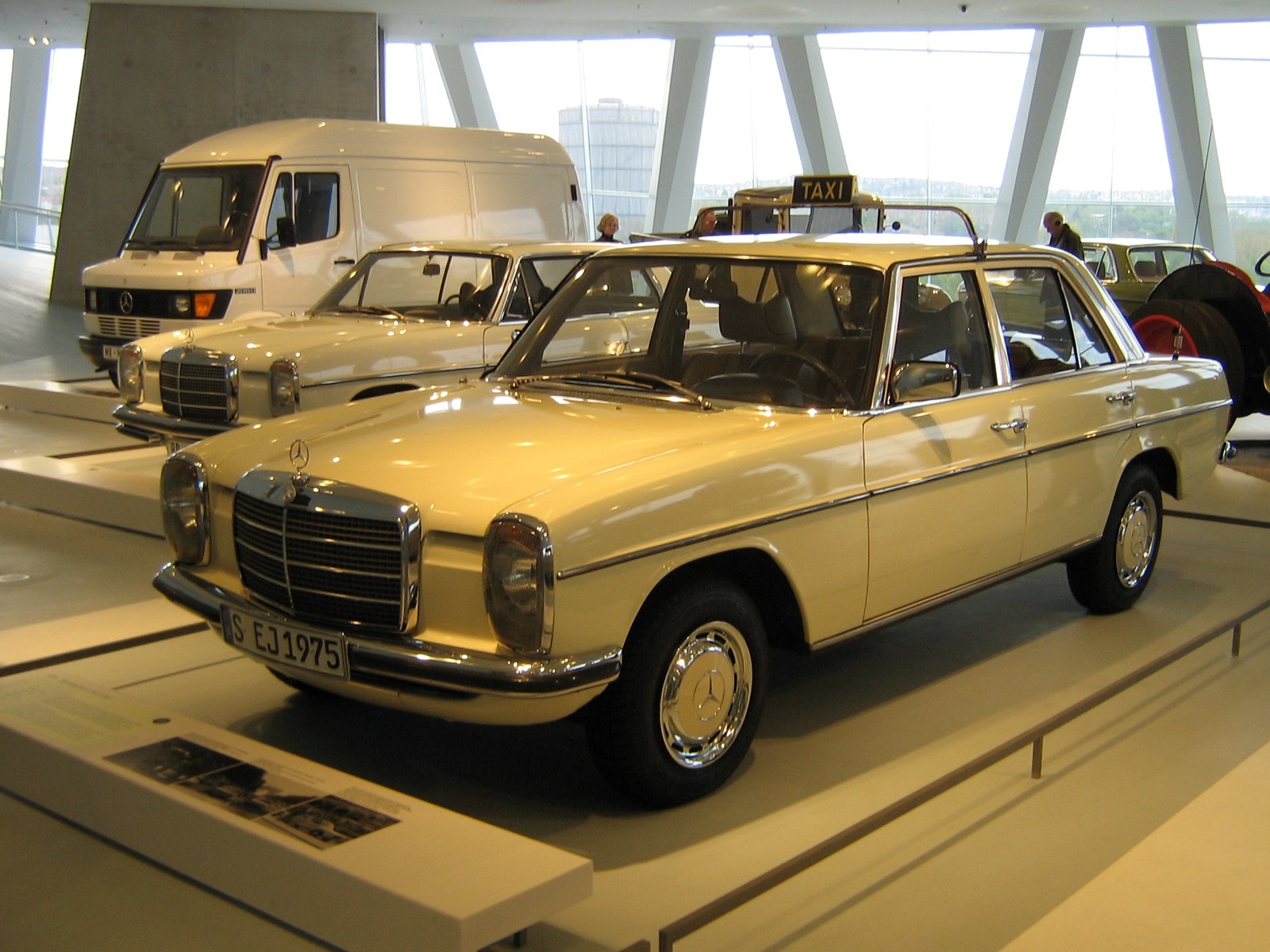A place amongst the stars

Mercedes-Benz AG
In southwestern Germany, 'Daimler' is, or perhaps was, regarded as the epitome of sophistication, both on the road and in the collective consciousness. Each year, hundreds of thousands of people embark on a 'pilgrimage' to Stuttgart, the birthplace of the automobile. Showcasing around 160 vehicles spanning over 130 years of automotive history, ranging from legends such as the Gullwing, prototypes that never reached series production, the Silver Arrows that made racing history and through to the everyday Daimler produced in the millions – the Mercedes-Benz Museum is more than an exhibition; it is a living manifestation of the Mercedes legend.
The metal façade winds around the exhibition levels of the museum in wide, seemingly endless loops. The architectural design, inspired by our DNA, mirrors a double helix. In the large entrance hall, resplendent in exposed concrete, a babel of languages echoes, reminiscent of a bustling departure lounge. This is Stuttgart at its most cosmopolitan. One could say the lift is a stairway to heaven, taking us to the 'happy parking grounds' of these antique Mercedes stars. Welcome to 1886! The very first automobiles, including the three-wheeled Benz Patent Motor Car and Daimler's motorised carriage stand like quaint carriages without horses – silent witnesses to a technological era that feels strange to us today. Like in a spiral, the tour leads you in wide curves from one collection floor to the next one, covering an area larger than two football pitches. 'Legend rooms' recount the history of the Mercedes-Benz brand in chronological order. Buses, taxis, fire engines and ambulances, as well as vehicles with prominent previous owners, are presented in the 'Collection rooms' in themed areas spanning different time periods.
The dawn of the Mercedes era

It was the impetus from motorsport provided by Emil Jellinek, who later became the Austro-Hungarian Consul General, that also contributed to the success of the Daimler motor cars. Jellinek raced Daimler's motorised cars from 1899 under the pseudonym Mercédès – the name of his daughter – and was triumphant. Mercédès, achieving notable victories from 1899 onwards. The collection documents the rapid advancements of the time. As the Daimler Motor Company began marketing its cars under the name Mercedes, Jellinek outpaced the competition, and the Mercedes legend was born.
The subsequent area showcases vehicles emblematic of the imperial era, featuring wooden spokes and luxurious fabrics, culminating in the grand, supercharged Mercedes of the 1930s. The museum captures the opulence of that period for the rich and powerful. Mundane vehicles were not good enough; the elite wanted to flaunt their prosperity. The meticulous preservation of the cars creates a vivid journey back in time.

The post-war period unfolds on the next level, featuring the iconic 300 SL, renowned as the most famous sports car of the 20th century. Originally designed for racing, the Gullwing won races across the world. Both the vehicles and exhibition space itself embody the spirit of the post-war economic boom. Strolling through the exhibits evokes a sense of unwrapping Christmas presents: amidst the oohing and aahing, there is an undercurrent of anticipation, akin to eagerly awaiting that special gift that's been on our wish list all year long: the cars of our childhood.
From everyday cars to classic automobiles
Here it is, at last: the Strichachter ('Stroke Eight'), affectionately dubbed so following its release in 1968. This particular model, a 240 Diesel, served as a taxi – the embodiment of hard-working virtue. These Mercedes vehicles remain a familiar sight on the streets of Cairo and Marrakech. The taxi drivers there still rave about them wishing the engineers who came up with the design a place in paradise. If only the car could share its countless journeys – from running red lights on the way to the hospital for a birth to transporting tardy groomsmen and taking mourners to funerals ...

These dependable Daimlers, produced in the millions, have undeniably earned their status as everyday classic cars. Among them are special models, such as the Popemobile crafted for Pope John Paul II, the metallic red 500 SL, which belonged to Diana, Princess of Wales, and the unrestored grey 190 SL of NASA astronaut David Scott. The museum solemnly presents the past, invoking a myriad of memories. However, only a few vehicles from the 80s and 90s are currently exhibited. What has become of the Mercedes legend?
Through the steep curve into the future
Towards the end of the tour through the museum, Mercedes truly unleashes its power. Silver Arrows and record-breaking racing cars are positioned around a real steep curve, reminding us of Mercedes' successes in motorsport. Authentic memorabilia from famous racing drivers are also on display. The tour culminates in the 'Fascination of Technology' exhibition, dedicated to the design process. Here, futuristic visions of tomorrow's cars with new power train systems and body design take centre stage. Could this herald the birth of a new legend?
The museum is dynamic and postmodern, cleverly playing with light and shadow. Its essence is both timeless and distinguished, a bit like an old Mercedes in more ways than one – solid, robust, quietly impeccable. At the exit, visitors can spy the latest models from the Mercedes dealership opposite the museum. As I walk past I think of the Strichachter I saw on the second floor. Will the new ones also earn a place amongst the stars?
Special ehibition 'On the Move'
Visitors are guaranteed plenty of action and information about sustainable mobility in the interactive special exhibition 'On the Move – Your Way. Your Decisions. Your Future'. Featuring eight experience-specific stations and five topic-specific stations, the exhibition challenges visitors' skills, knowledge and curiosity. Large touchscreens take visitors on a playful, interactive journey into the virtual city of Mobitopia and the mobility of tomorrow. What is the best mode of transport for you and other people? How can vehicles, infrastructure and users be networked with each other? How can new mobility concepts help to make cities more liveable? At the end, visitors will receive a personal rating. The exhibition showcases trends, innovations and practical examples to prompt visitors to reflect on their everyday behaviour.
Six institutions, including DLR, contributed their knowledge, expertise and a range of practical examples to the exhibition. A complimentary programme of events includes themed days, guided tours, lectures and discussion groups at the museum itself or hosted by the organisations involved. Admission to the exhibition on Level 0 of the Mercedes-Benz Museum is free until mid-November 2024.
An article by Jens Mende from the DLRmagazine 174
